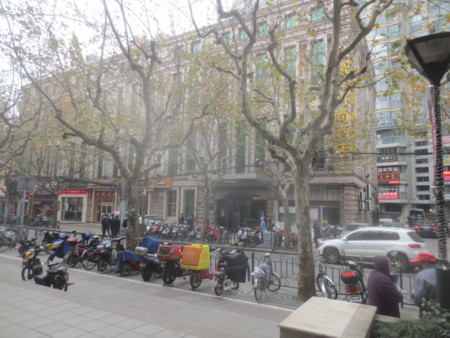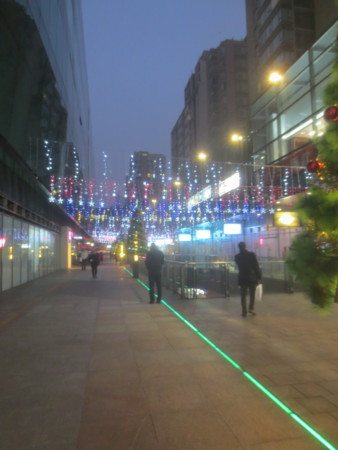『朝日新聞』の記事;
幻のサメ「メガマウス」、撮影に成功 千葉沖で定置網に2017年5月22日18時30分
幻のサメと呼ばれる「メガマウスザメ」が22日朝、千葉県沖の定置網に入った。体長は5メートルほどのメスで、いけすに移された。朝日新聞記者も潜水取材し、優雅に泳ぐ姿を確認。写真や動画も撮影した。
メガマウスザメは、全長5〜6メートルで、巨大な口が特徴のサメ。「沖縄美(ちゅ)ら海水族館」を運営する一般財団法人「沖縄美ら島財団」によると、1976年に発見された。ジンベイザメやウバザメと同じようにプランクトンを食べる数少ないサメだが、目撃例や捕獲例が少なく「幻のサメ」と呼ばれている。(中山由美)
http://www.asahi.com/articles/ASK5Q5KCKK5QULZU00P.html
何れの記事も動画がついている。口が大きいから「メガマウス」。漢字で書けば大口鮫?
さかなクン「夢のよう」 泳ぐメガマウスザメに興奮2017年5月22日19時46分
幻の巨大ザメと呼ばれる「メガマウス」が22日朝、千葉県館山市沖の定置網に入った。体長約5〜6メートルのメス。近くのいけすに移され、ゆったり泳ぐ姿を朝日新聞記者が潜水して撮影した。1976年に米ハワイで発見され、生態でまだわからないことが多い。生きて泳ぐ姿をとらえた例は世界でも珍しい。
メガマウスは午前4時半ごろ、館山市の須崎灯台の沖の定置網に入っているのがみつかった。同日午後、東京海洋大名誉博士のさかなクンも潜って確認した。「丸い頭と大きな口が特徴で、メガマウスで間違いありません。元気に泳ぐ姿に会えるなんて夢のようでギョざいます」と話した。仲谷一宏・北海道大名誉教授によると、世界では台湾やフィリピンなどで110例、国内では20例ほどが確認されているが、多くは網にかかって死んでしまったもの。泳ぐ姿をとらえるのは非常に珍しく、世界的にも飼育例はないという。 23日に水族館関係者が確認にくる予定。その後はまだ決まっていない。(中山由美)
http://www.asahi.com/articles/ASK5Q64VZK5QUTIL06Y.html
「メガマウス」*1というのはちょくちょく話題にはなっているようだ。4月に尾鷲湾の定置網に引っ掛かった時も報道されていた*2。近年で最も注目されたのは、2014年4月に静岡県沖でやはり定置網に引っ掛かって、東海大学海洋科学博物館で「公開解剖」が行われたときだろうか*3。また、沖縄本島では、「メガマウスザメ」の歯の化石が発見されている。『琉球新報』曰く、
メガマウスザメの歯の化石、本島で発見 アジア初めて
2015年1月21日 09:09
世界的にも化石標本がほとんどないメガマウスザメの歯の化石がこのほど、本島東海岸で発見された。北米やヨーロッパなどでの発見例はあるが、アジア地域での発見は公式記録として初めて。
発見したのは沖縄美ら島財団(本部町)の沖縄美ら海水族館教育普及担当、横山季代子さん(44)。同財団総合研究センターの研究員冨田武照さん(32)と連名で論文をまとめ、春にも出版される日本古生物学会の英文の学術誌「古生物学研究」に掲載される。古生物学のサメを専門としている冨田さんは「今回の発見で、全世界に分布していたことが明らかになった。メガマウスザメの進化の解明につながれば」と話している。
見つかった化石は1センチほどの大きさで、歯がフックのように曲がっている。冨田さんによると、見つかった海岸の地層が新生代第三期にあたることなどから、約1千万年前から300万年前の歯とみられる。
横山さんの発見は、化石収集が趣味の岩瀬暖花(ほのか)さん(9)=那覇市立天久小3年=との出会いがきっかけだ。化石が多い東海岸の場所を暖花さんが紹介、横山さんがその場所で収集を進めている中で発見した。
横山さんは「発見当時、価値のある化石と知らなかった。暖花さんと冨田さんとの出会いが今回の発見とアジア公式記録につながった」と話している。<用語>メガマウスザメ 1976年にハワイで初めて発見された、プランクトンを主食とする体長約5〜6メートルの大型のサメ。世界的にまだ60例程度しか発見や捕獲がされておらず、生態は不明で「幻のサメ」といわれる。生きた状態ではめったに見られないという。化石の発見例はさらに少なく、これまで北米やヨーロッパなど10地域で歯の化石が見つかっているが、アジア地域では公的機関が所蔵し、論文発表された事例は過去にない。
http://ryukyushimpo.jp/news/prentry-237632.html
*1:See eg. https://ja.wikipedia.org/wiki/%E3%83%A1%E3%82%AC%E3%83%9E%E3%82%A6%E3%82%B9
*2:See eg. 小坂亮太「定置網に「メガマウス」 尾鷲港」http://www.chunichi.co.jp/article/mie/20160416/CK2016041602000014.html
*3:See Newsphere編集部「日本、希少な「メガマウス」サメを捕獲 英米メディアは“エイリアン”と興奮…海外ユーザーはなぜか批判」http://newsphere.jp/entertainment/20140509-8/


































![百日紅~Miss HOKUSAI~ [DVD] 百日紅~Miss HOKUSAI~ [DVD]](https://images-fe.ssl-images-amazon.com/images/I/51lfef-a1cL._SL160_.jpg)